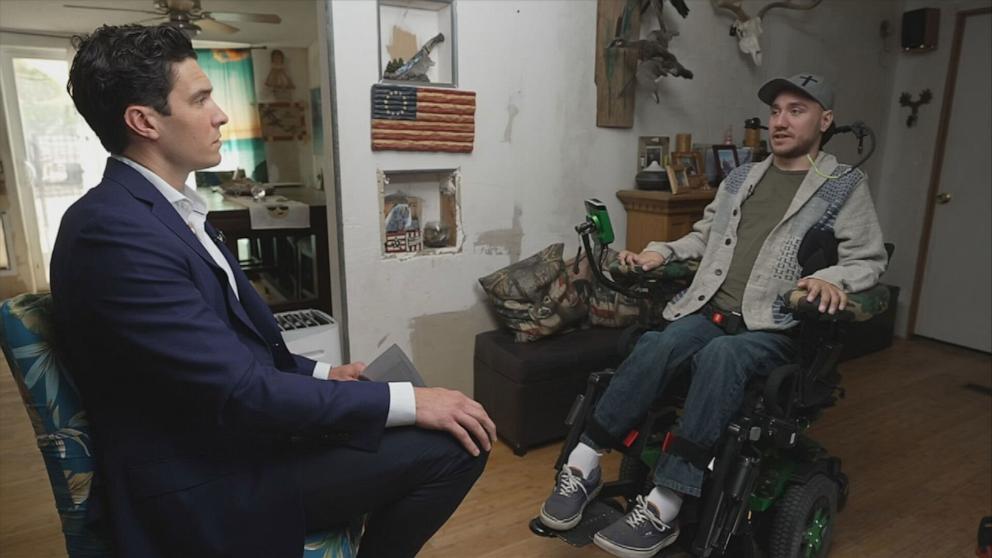Tech
Neuralink’s first brain implant patient feared device would have to be removed

The 30-year-old quadriplegic man who opted to become the first human to receive Elon Musk’s Neuralink brain implant chip called “The Link” revealed how the pioneering technology has changed his life.
Noland Arbaugh, who became paralyzed from the shoulders down after sustaining a spinal cord injury from in what he describes as a freak accident after jumping into a manmade lake, became the first human participant in Neuralink’s clinical trial in January, eight years after his accident.
In an exclusive interview with “Good Morning America’s” Will Reeve, Arbaugh said that the device has given him the ability to have nearly full control over using a computer — using only his thoughts.
The device, which is approximately the size of a coin, is implanted beneath the skull and uses 64 tiny wires, or threads, equipped with over 1,000 electrodes that can read neuron activity in the brain and connect with a computer or smartphone, according to the company.
“I can control a computer just like anyone else can, which is not something I was able to do beforehand,” Arbaugh said.
Arbaugh said he wasn’t worried about signing up for the first phase of the clinical trial because by participating in the forefront of scientific research, he is helping pave the way to improve the lives of people who are paralyzed like he is.
“I knew that if I did this then it would take a lot of headache and heartache away from the people down the road,” he said.
Despite great progress since undergoing the procedure, there were issues with the technology that nearly led to the company removing the device from his brain.
Arbaugh said that after some of the threads became loose from his brain, there were performance issues with the device.
Fearing he would lose the enhancements the device brought to his life, Arbaugh said he got emotional.
“It was very, very hard to give up all of the amazing things that I was able to do,” Arbaugh said, adding, “I think I had cried, basically, afterward.”
However, Neuralink was able to able to make modifications to the technology and improve Arbaugh’s connection, according to Neuralink co-founder DJ Seo.
“We rolled up our sleeves and found various different ways for Nolan to be able to recover his performance,” SEO said in the “Good Morning America” interview. “Ever since then, he’s been able to actually do better than what he’s been able to do before this.”
In a blog post from the company, Neuralink explained the modifications made to the device.
“We modified the recording algorithm to be more sensitive to neural population signals, improved the techniques to translate these signals into cursor movements, and enhanced the user interface,” Neurolink wrote on May 8.
Looking to the future, Arbaugh is hopeful there will be a day when spinal cord injuries will not be completely debilitating, saying, “I don’t think it’s as far away as people might think.”
“It’s going to be amazing when someone can have a spinal cord injury, go into a hospital, get surgery, and walk out a couple days later,” Arbaugh said, adding, “I think it’s gonna happen.”
Neuralink was founded in 2016 by Musk and a team of scientists and engineers. The company says its mission is to “create a generalized brain interface to restore autonomy to those with unmet medical needs,” according to its website.
EDITOR’S NOTE: This story was updated to better reflect the circumstances of Noland’s accident.







:max_bytes(150000):strip_icc()/roundup-writereditor-loved-deals-tout-f5de51f85de145b2b1eb99cdb7b6cb84.jpg)


